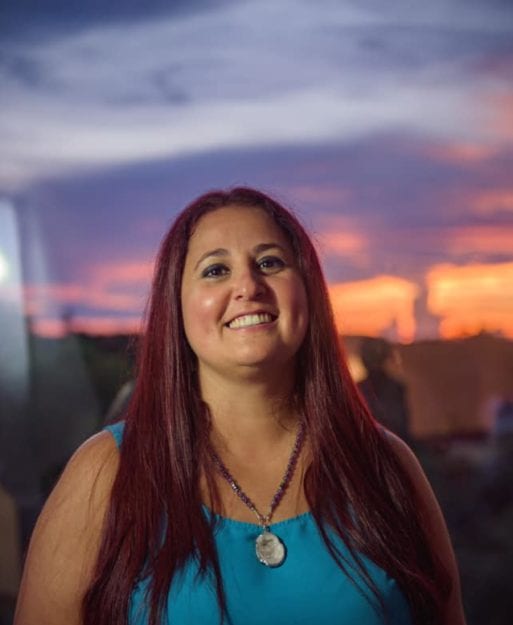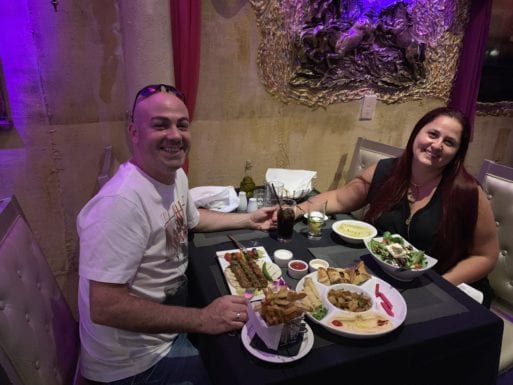
Today SevenPonds speaks with Luna Medina Wolf, a licensed mental health counselor from Boca Raton, Florida. A native of Israel, Luna is the owner of Helping Moon Counseling, where she specializes in treating clients with a history of psychological trauma and individuals struggling with addiction. She is also the president and co-founder of Professionals United for Parkland (PU4P) a nonprofit that provides ongoing counseling and support for the community of Parkland, Florida, where a gunman killed 14 students and three staff members at Marjory Stoneman Douglas High School on Feb. 14, 2018.
Editor’s note: This interview has been edited for length, clarity and readability.
Kathleen Clohessy: Thanks for speaking with me today, Luna. Can we start by talking a little bit about you and your background? What motivated you to choose counseling as a career and to work with victims of trauma?
Luna Medina Wolf: My choice to become a mental health counselor was shaped by a number of factors. First and most important, I grew up in a household where domestic abuse was a common occurrence, and those struggles have defined my journey throughout my life. I have always wanted to help people, and working with victims of domestic abuse was something I was passionate about. I started out as a volunteer at a domestic abuse shelter, and my goal was to continue along that career path. But I wasn’t having a lot of success in finding a job.
Then a position opened up at an addiction treatment center. I was offered the job, and I took it even though I didn’t particularly want to work in that field. But it wasn’t long before I came to realize that 80 to 90 percent of people who suffer from addiction have a history of a traumatic event at some point in their lives. I also began to see that if a person with a substance use disorder doesn’t work on that trauma, their chances of staying sober are almost nonexistent. So, though I kind of fell into it, I developed a passion for addiction counseling too.
Kathleen: I imagine that helping clients resolve old traumas is part of your treatment plan when you work with people with substance use disorders?
Luna: In my practice it definitely is. That said, many addiction treatment facilities teach their counselors that exploring old traumas is taboo. When I first started in addiction counseling, I was told by my superiors that those topics were strictly off-limits. I couldn’t believe it. “How can that be?” I thought. “If someone tells me they were raped when they were a child, how can I not explore that with them?” But I was told I couldn’t go there.
Of course, I did it anyway! I’m not a rule follower by nature. And my commitment is to advocate for people who can’t advocate for themselves. I’m going to use all the tools in my toolbox to help them no matter what a supervisor tells me to do. But there are a lot of counselors who do follow those rules. And their clients lose out.

Luna enjoys a night out with her husband, Asaf
Kathleen: Why do you think that is?
Luna: Unfortunately there isn’t a lot of research into the connection between trauma and addiction or how unresolved trauma affects recovery/relapse rates. So the evidence isn’t there to support doing trauma work with those clients. One of my goals is to begin to build that evidence base and research the connection when I go back to school for my Ph.D.
Kathleen: In addition to being a licensed mental health counselor and a certified addiction professional, I understand that you’re a certified EMDR therapist. I’ve had personal experience with EMDR and found it to be extremely effective. Can you talk a little bit about what it is and why it works?
Luna: Sure! EMDR stands for Eye Movement Desensitization and Reprocessing, a therapeutic tool that activates the right and left sides of the brain. It’s an evidence-based therapy that has proven remarkably successful for people who have experienced a traumatic event (whether or not they meet the clinical criteria for PTSD).
EMDR works by allowing subconscious memories (which are about 75 to 80 percent of what’s stored in our brain) to come to the surface. Many times people come to counseling because they are experiencing terrible distress — anxiety, depression, an eating disorder, relationship problems — and they have no idea why. Usually, or at least very often, these problems are linked to an old trauma that continues to be re-triggered by day-to-day events. By uncovering and reprocessing that initial trauma, the person is able to stop reacting to those triggers and begin to heal.

Luna at home with her family
Kathleen: Can you give me an example?
Luna: Sure. Here’s an example I use all the time. Let’s say that when you were 6 years old, you experienced a traumatic event while you were eating a hamburger. You don’t consciously remember the event, but snippets of the experience — the sights and smells and all the sensations associated with it — are stored in your brain.
Then one day years later, you’re at a picnic where the hosts are serving hamburgers, and you begin to feel anxious and upset. Below the surface of your awareness, the hamburger is triggering a subconscious memory of the trauma, and you’re becoming hyperaroused. You start sobbing and hyperventilating. To help you calm down, the host offers you a glass of lemonade.
Now your brain makes another connection — this time between the hamburger and the lemonade, which are now linked in your subconscious to both your current state of panic and the initial event.
As this happens over and over throughout your life, you are constantly making new associations that trigger the same type of response — so you’re constantly retraumatized. Over time, this cumulative trauma begins to have a profound effect on your ability to live a happy, emotionally healthy life.
What EMDR does is to help the brain get past those associations and uncover the initial traumatic event. Once you’ve done that, you can begin to perceive the event differently, process it differently, and react to it in a much healthier way.
It sounds very complicated, I know. But it works very quickly. Some people feel better after only a few sessions of EMDR.
Kathleen: Is EMDR related in any way to “tapping” therapy? I’ve heard that’s also very effective for people with PTSD.
Luna: Not really. Although EMDR sometimes includes tapping, the therapy you’re thinking of is called Emotional Freedom Techniques. It uses the same meridians and stimulates the same pressure points used in acupuncture and acupressure. It was pioneered by an Australian researcher, Dr. Peta Stapleton. But Dr. Lori Leyden is probably the world’s leading practitioner of evidence-based EFT. She’s had incredible success using it to help genocide survivors and child orphans in Rwanda. She’s also worked with survivors of the shooting at Sandy Hook Elementary School in Newtown, Connecticut.
Kathleen: Do you use EFT as well?
Luna: I do, although not as often as I use EMDR. I find it most useful for clients who are resistant to EMDR or who can’t talk about their trauma at all. EFT is very effective in helping people verbalize what happened to them.
Kathleen: What other modalities do you use?
Luna: I’m a holistic practitioner, so I use whatever tools will best serve my client’s needs. As a rule, I spend at least two sessions with every client taking them through a guided meditation to help them create a “safe place” they can go to if things become too intense. I also teach them breathing techniques, grounding exercises, and mindfulness meditation, all with the goal of helping them to feel safe. That’s very important when we are doing this kind of work.
This concludes Part One of our interview with Luna Medina Wolf. Please come back next week when we talk about Professionals United for Parkland and their work with survivors of the most deadly school shooting in U.S. history.

 How Can People Overcome the Effects of Trauma in Their Lives?
How Can People Overcome the Effects of Trauma in Their Lives?


 Our Annual Seven Holiday Gifts for Someone Who Is Grieving, 2024 Edition
Our Annual Seven Holiday Gifts for Someone Who Is Grieving, 2024 Edition
 “Making Mobiles” by Karolina Merska
“Making Mobiles” by Karolina Merska
 “Hands Up to the Sky” by Michael Franti & Spearhead
“Hands Up to the Sky” by Michael Franti & Spearhead














